Nicole M. Wolverton's Blog, page 2
April 22, 2024
We Have a Hardcover!
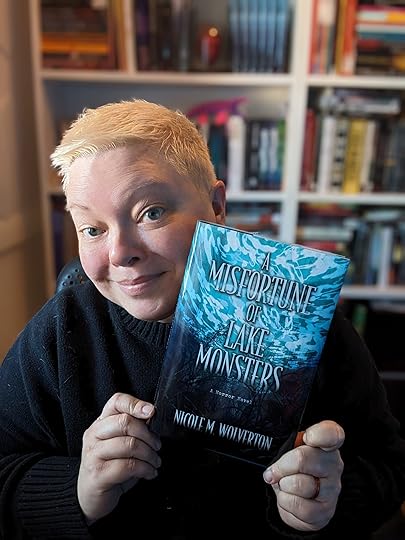 My paperback advanced reader copies of A Misfortune of Lake Monsters arrived on election day last fall, and it killed me that I had to be at the polls all day, denied access to the box o’ books–and so I was thrilled that my hardcovers (my contract stipulates I receive a certain number of them) arrived a few days BEFORE Pennsylvania’s primary election. It’s nice seeing my name not just on a book, but on a hardcover version with a nice jacket, etc. I’ve had a short story included in a hardcover anthology a few years back, but this is the first time I’ve had a hardcover all to myself.
My paperback advanced reader copies of A Misfortune of Lake Monsters arrived on election day last fall, and it killed me that I had to be at the polls all day, denied access to the box o’ books–and so I was thrilled that my hardcovers (my contract stipulates I receive a certain number of them) arrived a few days BEFORE Pennsylvania’s primary election. It’s nice seeing my name not just on a book, but on a hardcover version with a nice jacket, etc. I’ve had a short story included in a hardcover anthology a few years back, but this is the first time I’ve had a hardcover all to myself.
Publishing is weird. I’m not just talking about seeking publication, but more of publishing as a thing. As a field, I guess. I started submitting my short stories and writing toward publication about 15 or 16 years ago. My first novel–The Trajectory of Dreams–came out in 2013, and I shifted gears toward the young adult market (at least for novel-writing). I love writing YA because my own experience as a teen was kind of hideous, and I write the types of things that would have spoken to me at that age. You can see a lot of that in Lake Monsters–the friend trio I had at the time that made life bearable, the weight of expectations, the challenges of growing up in a rural area, the barriers to getting the future I wanted. There are a few young adult manuscripts I’ve written over the years that I still stand behind, and I’d like to see them find a home. All that said, I’ve been chasing publication of a young adult novel for a really long time, and getting what I want doesn’t quite feel like I thought it would. I’m not unhappy–I mean, I’m thrilled! There’s a lot about the process and the game, so to speak, that isn’t fulfilling and joyful. I think sometimes about Kondo-ing my life, and what that looks like in terms of publishing and my writing. Then I think that maybe this is an emotional time, and I shouldn’t make any real decisions. I have time for that later, once Lake Monsters comes out. I argue with myself constantly about what I want, what will make me happy, what I want to write–but it’s true: I don’t need to decide anything right now.
Writers go through stuff like this–existential crises and yips and all that. Anyone who says they don’t is probably lying. A colleague told me it would maybe feel anticlimactic once my book cover was revealed, a feeling I managed to avoid. Maybe I just delayed it? Whatever the case, being only around two months away from publication day for Lake Monsters is giving me all sorts of feelings, mostly excitement to see the book find its audience, and hope that I’ll figure it all out.
April 16, 2024
Monster of the Month: Cadborosaurus
If you’ve read an Advanced Reader Copy* of A Misfortune of Lake Monsters, you know I start my book off with a single quote: “Monsters cannot be announced. One cannot say: ‘Here are our monsters,’ without immediately turning the monsters into pets” (that’s Jacques Derrida, by the way, from his book The States of Theory). The Cadborosaurus is a prime example of turning monsters into pets. The locals in British Colombia call their pet monster “Caddy” for short.
Reportedly found on North America’s western coast bordering the Pacific Ocean, Caddy has a distinctly Loch Ness monster-esque appearance and has been sighted well over 300 times since the 1700s. Sightings are generally around Vancouver Island but range as far south as the San Francisco Bay. Like one or two other cryptids I’ve covered in the Monster of the Month over the last year, this may very well have started as a rumor started by Indigenous persons (in this case Alaskan Inuits) to scare off intruders. Over the years, there have been many sightings of Caddy that were later found to be something else–pack of sea lions, giant oarfish, basking shark, etc.
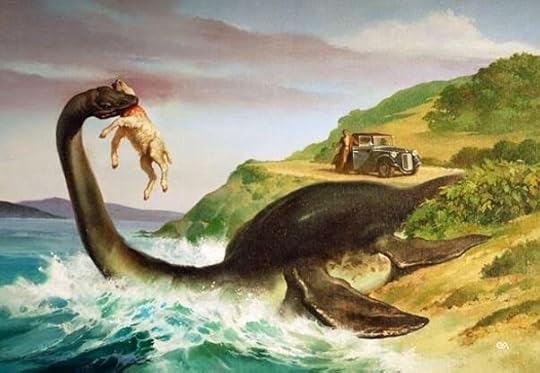 Also like the vast majority of cryptids I’ve covered, Caddy has never actually hurt or attacked anyone–but quite a few depictions of the cryptid show it actively attacking ships or people. Why do we have to make things up to be freaked out by? Isn’t reality enough? That’s rich, coming from someone who writes horror and regularly enjoys being scared of fictional things for the fun of it, eh?
Also like the vast majority of cryptids I’ve covered, Caddy has never actually hurt or attacked anyone–but quite a few depictions of the cryptid show it actively attacking ships or people. Why do we have to make things up to be freaked out by? Isn’t reality enough? That’s rich, coming from someone who writes horror and regularly enjoys being scared of fictional things for the fun of it, eh?
It may or may not be the case, though, that Caddy is just a story. In 1937, a couple of whalers caught a sperm whale, and while gutting it found a very strange creature in the whale’s stomach: described as a dog-horse hybrid, the thing was 11 feet long, and they’d never seen anything like it. Did anyone from the science community get a look at the carcass? They did not. The carcass was allegedly preserved but lost. What’s interesting is that the story went big anyway–possibly owing to the fact that the first published reported sighting of the Loch Ness Monster in Scotland came just a few years before (in 1933). I guess Canada needed their own lake monster. Now, there is a photo or two (very grainy and inclusive), and Dr. Edward L. Bousfield, a zoologist, and Dr. Paul H. LeBlond, an oceanographer, did write a book and papers about the possibility of Caddy’s existence in the 1990s (they are pro-Caddy, by the way), eventually encouraging folks to think of Caddy as a contemporary plesiosaur (there’s a more in-depth discussion about that here). Huh. Same as one of the theories about the Loch Ness monster. Whatever the case, it’s not particularly compelling science, much as I love the idea of it (and if you read A Misfortune of Lake Monsters, that will be obvious).
In the era of cell phone video, there have–of course–been recorded sightings. Again, though, nothing particularly compelling and obvious. Still, I’d like to think that somewhere near Vancouver Island, there’s an entire family of Cadborosaurus who are just really really good at hiding and getting a big kick out of occasionally giving the humans a thrill with a near-sighting. Because that’s what happens when we turn our monsters into pets: they play jokes on us.
* If you’re looking for Advanced Reader Copies, they are available for request at Edelweiss, Netgalley, Booksirens, or directly from the publisher. Also, the book is now available for preorder–I’ve partnered with a great independent bookshop in South Philadelphia, A Novel Idea, for a campaign that involves a limited edition totebag for the first 50 people who order
March 19, 2024
Monster of the Month: Mogollon Monster
Sunsets are romantic, right? You and your honey decide to hike into the Mogollon Rim in Arizona, pick a place above the pine forest lowlands to watch the sun drop to the horizon, lighting up everything red and gold. And then the darkness descends. You start hearing whistles–birds and coyotes, probably. And that’s okay, nothing out of the ordinary. But then come the rocks, hurled at you from the treeline by an unseen hand. You’re dodging the onslaught, and then that inhuman shriek echoes out of the forest, followed by a silence so loud you can hear it in the blood beating in your ears.
You are about to have a close encounter with the Mogollon Monster.
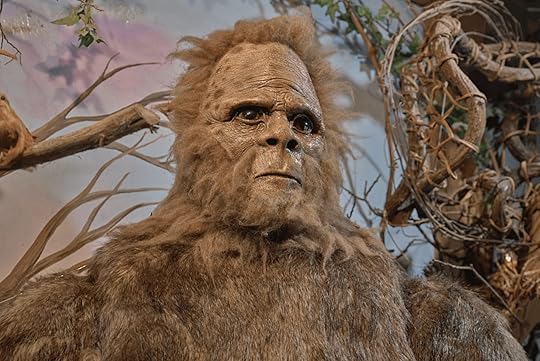
The Mogollon Monster is Arizona’s version of the Bigfoot. It is described as humanoid creature that is at least seven feet tall, body–except for the chest, face, hands, and feet–covered with long black or red-brown fur. The large, red eyes glare from its naked face, and it emits a fairly hideous odor: dead fish, skunk, decaying moss, and musk. The smell alone seems enough like a reason to avoid running into the Mogollon, no?
Mogollon sightings date back to 1903, when The Arizona Republican newspaper ran a brief about someone seeing the creature at the Grand Canyon. I’m not sure how this report links to the legend, though–the brief describes the creature as having long white hair and a long matted beard, naked, with long fingernails. It sounds like a vagrant rather than a cryptid. But a future cryptozoologist on a Boy Scout trip in the 1940s says he saw something more on-brand–as have people in the 1980s and beyond. Nothing more recent, though, and certainly nothing that involves photographic evidence.
Like all good cryptid stories, you can celebrate the Mogollon Monster–with events! There’s a punishing 100-mile footrace called the Mogollon Monster 100, as well as a Mogollon Monster escape-type game.
March 11, 2024
Tidbits of news…
If you’re an audiobook fanatic, you might be interested to know that I received an excerpt of the very fantastic Stephanie Willing giving voice to Lemon Ziegler in A Misfortune of Lake Monsters and am downright giddy about it (and I’m probably days away from the getting to hear the final version of the full book–I’ve totally got ants in my pants about it: I’ve been waiting for this moment for months!). Now might be a very good time to sign up for my monthly author newsletter if you haven’t already done so: newsletter subscribers are going to get a sneak peek (sneak listen?) at that excerpt in the next issue (out on April 1), and first crack at hardcover preorders… which includes a fairly awesome cotton tote bag that is only available for the first 50 orders.
In other news, the fabulous Kathleen Fine, author of Girl On Trial, interviewed me for her Behind the Pen series! Do check that out if you might be curious about the oddities I keep in my home office. A life-size heart that looks freshly torn from someone’s chest? Yeah, I’ve got one of those. Something I didn’t mention in the interview but which is one of my prized possessions: a framed poster from a Henry Rollins spoken word tour that a friend of mine picked up about a decade or so ago–she had him write a personal message to me on the poster, which continues to make me laugh every single time I look at it. Hey, not everything in my office is dripping blood!
Lastly, I received word today that the hardcovers of A Misfortune of Lake Monsters have gone to print! As I sit here in my writing office, typing this, the wind is absolutely howling outside–so much so that I’m shivering, despite wearing a heavy sweater and a few other layers… yet it warms the poisoned cockles of my cold, dead heart to know I’m going to have final copies of my baby soon. I’ve had a short story included in a hardcover edition before, but not a book of my very own–and not one with a handsome jacket. It’s a delight to me that there are still firsts for me as a writer, despite my Elder Crone status. And while I’m thrilled to be able to lay hands on my book, what I’m even more excited about it getting to sign a few and send them off to the very wonderful writers who agreed to blurb Lake Monsters. It feels like such an adult thing to do–again, as an Elder Crone, you’d think I’d be firmly entrenched in my adulthood, yet I don’t feel that way at all… in my personal life or my writing life. Maybe that’s a good thing?
February 26, 2024
Like Picking a Favorite Child
Shepherd’s been asking writers, including me, for their favorite books of 2023. I like to spread the love around, so my list included my favorite adult, YA, and MG books of last year. I chose Monstrilio by Gerardo Sámano Córdova, Starlings by Amanda Linsmeier, and Peril At Price Manor by Laura Parnum. All horror or horror-adjacent, I might add. If you haven’t already read these, please do!
I have no idea how I’ll pick my 2024 favorites. Normally I don’t read a lot of books in the year that they’re published. I mean, I buy the books–my groaning bookshelves and bursting-at-the-seams Kindle is proof of that–but for a long time, I treated my TBR stack as a chronological issue. I’d just pick up the next book on the pile and move forward. Since being part of the 2024 debut group, however, I’ve read a lot of ARCs belonging to the folks in the group, and the books have been overwhelmingly great. I’m in the middle of Lockjaw by Matteo Cerilli right now (and admittedly, have been for over a month–not because of the book, but because Italian class and Lake Monsters stuff, coupled with a really busy time at my day job, has made my brain hurt too much to read a lot), and I have four or five ARCs waiting behind that. This year really is the year of fantastic debut horror and thrillers!
February 20, 2024
Monster of the Month: Tailypo
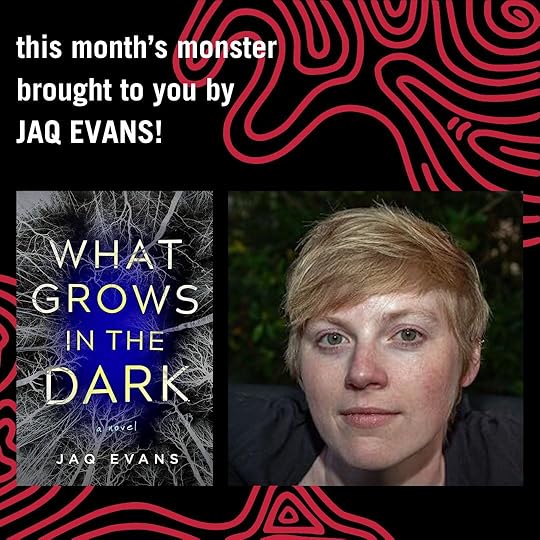 It’s very late. You’re alone. You were sleeping until suddenly you weren’t. You have to pee, or you turned over wrong and pulled something in your neck—but it doesn’t matter what woke you, because now you’re staring at the foot of your bed. The shadows are deep and heavy, as though something more than shadow crouches there, just beyond your mattress.
It’s very late. You’re alone. You were sleeping until suddenly you weren’t. You have to pee, or you turned over wrong and pulled something in your neck—but it doesn’t matter what woke you, because now you’re staring at the foot of your bed. The shadows are deep and heavy, as though something more than shadow crouches there, just beyond your mattress.
As you lie there, unable to move, you’re abruptly certain that something is about to drag itself up onto your bed. One of your feet is above the covers. You kicked it free of the blankets because you were too hot, and now your bare toes are inches from whatever is coming over the edge of your mattress, and you want desperately to move it to safety but if you do, if you even breathe, it’s going to know you know it’s there.
This tortuous, expectant dread is burned into my brain from early childhood, thanks to the Appalachian campfire story of Tailypo (also called Taily Po or Tailybones): a bobcat-like monster with pointed ears and a long, prehensile tail. When a starving hunter catches the beast and lops off its tail for a stew, he and his dogs are slowly but inexorably punished for the act.
First it’s only a moaning voice on the wind—“Tailypo, tailypo, I just want my tailypo!”—that keeps the hunter awake in his rural, isolated cabin. Then a scritching noise begins to stalk the walls, sharp nails digging into the seams, searching for a way in. That inhuman voice whispers, “Tailypo, tailypo, who’s got my tailypo?” before the dogs chase it off, though one by one, they fail to return.
Finally, inevitably, all the dogs are gone. The farmer lies alone in his drafty bed and the scritching has never been louder—until it stops. The clatter of nails on the floor betrays the monster’s approach, and then two clawed paws and mean red eyes inch up above the foot of his mattress. “You’ve got my tailypo,” the monster says, and… well, suffice to say, it goes on a retrieval mission, the level of gore in accordance to the age of the listeners.
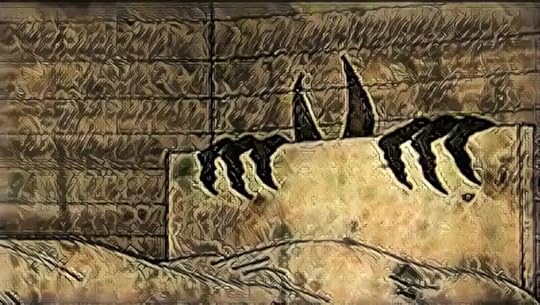
For me, Tailypo (although I suppose we have a Frankenstein situation with the name) is fascinating not only because it’s a weird little monster that might disembowel me in my bed, but because it was only trying to live its weird monster life until a human disrupted it. In the legend, the hunter reaps what he sows, though neither he nor the monster are depicted as particularly evil.
There’s something poetic about that, and appropriate to the deep woods and mountains that spawned this story: you have to respect nature, and if you don’t, you’ll get what’s coming to you—but also, humans will act desperately when pushed to it, but it doesn’t make us evil, and at the same time, we aren’t automatically more deserving of life than anything else.
I return to these themes and ideas over and over again in my own writing: that everyone is capable of doing bad things (and almost anything can be justified if we try hard enough). That as much as we invade nature, nature has the power to invade us right back. And, of course, the deep horror of being in a place that should feel safe and familiar—but knowing, down to your bones, that something is watching just out of sight.
If you’re a fan of wild woods and what might be lurking in them, and worse, what might come into your home and force a reckoning you may not be ready for, my debut novel WHAT GROWS IN THE DARK could be up your alley! Available from MIRA / HarperCollins on March 5, 2024.
Jaq Evans grew up running around the woods in Virginia’s Blue Ridge foothills and now lives near different mountains in Seattle. A graduate of the Stonecoast MFA program, Jaq writes fiction, narrative nonfiction and poetry. What Grows in the Dark is her first novel.
February 16, 2024
Look, Ma: I’m on a podcast!
Hearing my own voice is as uncomfortable as ever, but I had a great time on the Shining Moon podcast, talking young adult and middle grade speculative fiction with David Anaxagoras (creator and co-executive producer of the Amazon series Gortimer Gibbon’s Life on Normal Street) and former FBI agent (and now-writer) Alicia Hilton. There’s a fun discussion around what counts as horror and young adult fiction–and I read an excerpt from my short story “The North American Guide to Animal Slaughter” that appeared in the Slashertorte anthology back in 2020. If you want to check it out, here’s the link!
January 22, 2024
Bring On Summerween!
Start the week with my list of the best, in my humble opinion, YA Summerween books to launch you into the autumn spooky season! Shepherd published my little listicle that highlights some of my favorite young adult horror books that are set in and/or published in the summer, and if you disagree with me on any of these, do go and read why I’ve chosen them! Whatever your own opinions are, this was a really fun exercise–in considering what YA horror is as well as what counts as YA horror!
Apparently it’s a bone of contention around what counts as YA horror. Stephen Graham Jones’ book, for instance is not officially (from a marketing point of view) considered YA horror, despite the fact that his protagonist is a senior in high school when the book begins–her high school graduation is a thing that happens. As far as I’m concerned, that’s YA (although I understand the protagonist isn’t high school-aged as the series progresses, so maybe that’s why it’s not considered YA? I dunno). I have a similar argument about Justin Evans’ book The White Devil: the characters are primarily teens at a board school. I suppose the author can simply say, yeah, I wrote about high school aged kids, but I didn’t write this book for them–and that’s that. There’s an argument to be made there around authorly intent, although there’s just as powerful an argument to be made that it’s insulting to say this was written about you, but it’s not for you because you’re not mature enough, or you’re not smart enough, or you’re not [insert reason here] enough. Part of why I consider a book YA if it has a YA protagonist is my own experience as a reader in my teens–YA lit wasn’t an overly developed category in the 1980s, so it was limited to things like the Nancy Drew and Sweet Valley High series, Paul Zindel and Robert Cormier books, some Beverly Cleary and Judy Blume (although, hey, Forever, right?). There was no YA horror, except for maybe Lois Duncan. I liked Duncan well enough–I mean, a book about three high-school students’ murder of their English teacher is pretty appealing for someone who likes a morally gray protagonist. But it always puzzled me why, say, Stephen King’s Carrie wasn’t considered YA. I read them both about the same time, and there wasn’t much of a difference to me. Semantics, right?
But that does bring up a good point: is there such a thing as too dark for a YA novel? I have things to say about Moms 4 Liberty here that would be a tangent and very sarcastic and cynical, so I’ll spare you. Looking at the books I’ve chosen for my list at Shepherd, four out of five are pretty grisly and half involve morally gray protagonists who are, on some level, also killers (and in some cases cannibals). Interestingly, the television series Dexter was officially NOT meant for teens under the age of 16–and, anecdotally, it seems like the Darkly Dreaming Dexter series are beloved by your average 14-year-old who reads horror. Again, this is my own experience as a reader, but as a kid I wanted morally gray and bloody books, which is probably why I read a lot of Stephen King when I was ten or eleven. I never came up against a ceiling for myself, but the teenagers in my life seem pretty capable of deciding quickly if something is right or wrong for them–and they don’t seem particularly excited about not having the agency to make that choice themselves.
So yeah, fun exercise! It would make a really fascinating academic paper–I’d be surprised if scholarship doesn’t already exist about it. Looks like I’ll to spend some time on JSTOR later!
January 16, 2024
Monster of the Month: Kushtaka
The name alone fills me with glee: Kushtaka, the trickster wereotters. That’s right: not werewolves—wereotters.
Alaska is one of those places where anything seems possible. My husband and I took a road trip from Anchorage to Homer a few years ago, and driving the road between the Chugach Mountains and Cook Inlet is like no man’s land. Your cell phone signal disappears in spots. If your car breaks down, you’re not going to have a good time… and that is especially true if you happen to run into wereotters. Hey, there’s no one to hear you scream! Of course, the Kushtaka typically don’t hang out over that way, but rather, in the bits of land directly between British Columbia and the Gulf of Alaska: traditional Tlingit native lands.
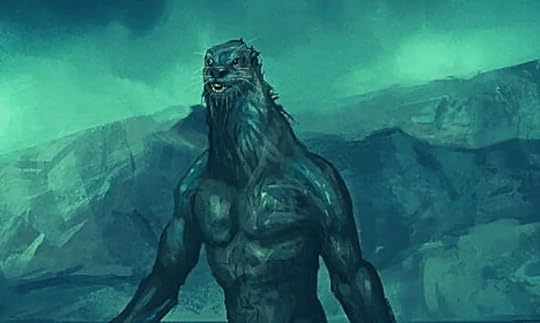
The Kushtaka are a Tlingit legend—they believe at least some otters can shape-shift into humans to do evil. Specifically, the Kushtaka trap the souls of regular humans to prevent them from reincarnating… for what reason, I haven’t yet discovered. The Kushtaka are usually hanging out in a group, and they might find you when you’re lost or injured, claiming they’re there to help. Or maybe they lure you to them by screaming like a woman or a child in distress, relying on your sense of decency to get you alone. Whatever the case, they lure you into the wilderness, usually to a river, and maybe tear you limb-from-limb or turn you into one of them. Another version of the story indicates that Kushtaka are more interested in tricking sailors to their deaths.
But don’t worry if you have a dog: dogs apparently repel Kushtaka. Good boy, Spot! Wereotters can also be warded off with copper, urine, or fire. I mean, if you pee on a creature and light it on fire, and it doesn’t back off, there’s a bigger problem, no? Whatever the case, there’s no actual record of Kushtaka sightings, nor—of course—any recorded deaths. Kushtaka are, though, reputed to have arrived in Alaska from Asia, crossing the Bering Strait during the last ice age.
You can find references to Kushtaka in popular culture, of course, including the novel Hold the Dark (2015) by William Giraldi and The Twins of Petaybee series (early 2000s) by Ann McCaffrey. In 2019 a Coast Guard member made a short film called Kushtaka; it was filmed in Kodiak, Alaska. No reports of any wereotter sightings during the filming.
December 27, 2023
Ring In the New Year… With Ghosts!
Join the very fabulous Angela Yuriko Smith (publisher of Space & Time magazine, a three-time Bram Stoker Awards® Finalist and HWA Mentor of the Year for 2020) on January 1, 2024 for the first 2024 episode of the Exercise Your Writes podcast–that includes a reading of my short story “From Shore to Sea”… or an excerpt from it anyway. At 2PM EST, the episode goes live with my reading and five others:
Pixie Bruner with “Trigger Warning“ (Abridged for Audio)
Laura Kester Duerrwaechter with “Poet Obscura”
Amy Zoellers with “Pottery Anguish”
Valerie Williams with “A Mischief in Gordonsville”
Mark Guyer with “Phantom Delivery Excerpt”
I’m excited to be in such great company and also happy to have a chance to read a bit of “From Shore to Sea,” which originally appeared in the autumn 2023 issue of The Colored Lens. The story is a love story within a ghost story within a ghost story, and it’s inspired by a trip that my husband and I took to Homer, Alaska a few years ago. Hope you can tune in!



